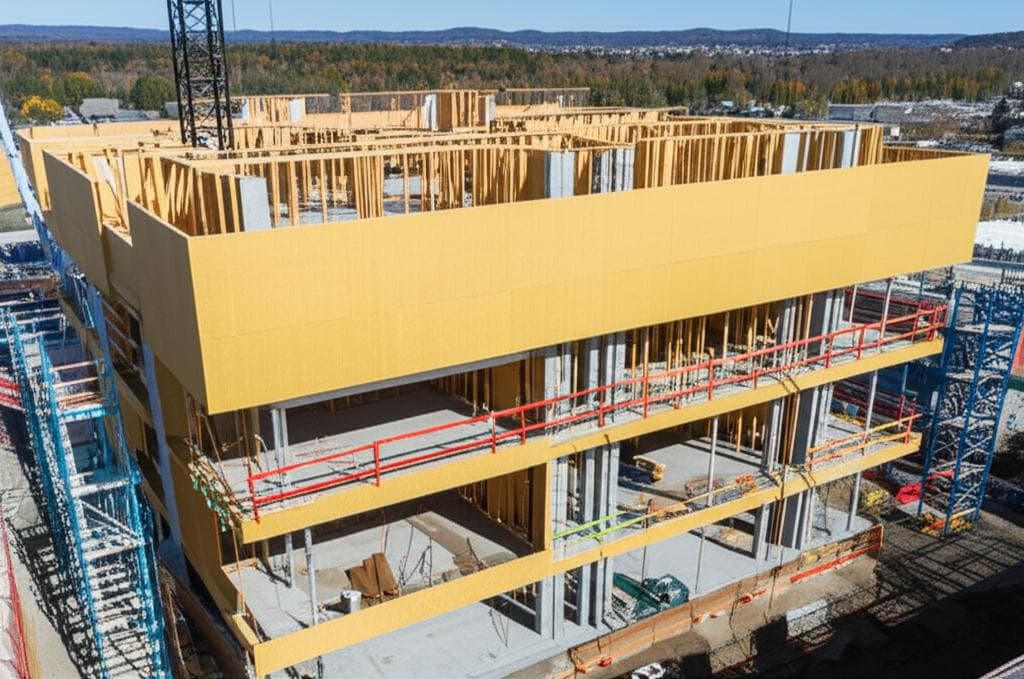Mass Timber Construction: Fire Safe and 40% Faster
Imagine a construction site where walls assemble in days rather than weeks, and the air carries the fresh scent of wood instead of concrete dust. I recall my first experience with a mass timber project, where the rapid progress and sturdy feel left a lasting impression. This approach revolutionizes how homes and commercial buildings take shape, combining efficiency, durability, and visual appeal.
Opportunities in Mass Timber
Homeowners and builders frequently balance concerns about cost, safety, and environmental impact, which can complicate decisions. Traditional materials like concrete and steel provide reliability, yet they involve extended timelines, substantial carbon emissions, and elevated labor expenses. Mass timber presents an alternative: layered engineered wood that matches steel in strength and longevity.
Trust remains a common barrier, as people seek assurance that wood withstands fire, weather, and wear. Mass timber not only complies with rigorous safety standards but often surpasses them, particularly in fire resistance, through advanced engineering techniques.
How Mass Timber Accelerates Construction
One primary benefit involves construction speed. Prefabricated panels and beams arrive site-ready, simplifying assembly like fitting puzzle pieces. Teams minimize on-site adjustments, which keeps projects on track and budgets stable.
Mass timber projects typically complete 40 percent faster than those using steel or concrete. This efficiency translates to weeks saved on residential builds or months on larger structures, while reducing neighborhood disruptions and weather-related setbacks.
Understanding Fire Safety in Mass Timber
Fire concerns dominate discussions: how does wood outperform steel? Mass timber's design features thick beams that char externally during fire exposure, creating an insulating layer that protects the core. This process slows combustion significantly, allowing more time for emergency response and maintaining structural stability.
Steel, however, loses strength and deforms under intense heat. Mass timber offers predictable performance, backed by extensive testing and code compliance, which has led to approvals for taller wooden structures in various urban areas.
Key Advantages for Builders and Homeowners
Mass timber extends beyond speed and safety to deliver practical benefits that enhance projects.
-
Sustainability Focus: Wood sequesters carbon naturally, and responsible sourcing minimizes environmental impact compared to resource-intensive steel or concrete production.
-
Lightweight Durability: The material weighs less than concrete, easing foundation requirements and potentially lowering excavation costs.
-
Flexible Design Options: Precision cutting in factories accommodates windows, utilities, and custom features, streamlining on-site installation.
-
Warm Aesthetic Appeal: Exposed timber elements create inviting interiors with a natural, contemporary vibe; in one project, an uncovered beam became the focal point of the space.
These elements combine to make mass timber a versatile choice for modern construction needs.
Cost Factors and Regional Availability
Initial material costs for mass timber may exceed those of standard framing due to its specialized nature. However, reductions in labor and timeline often offset this difference, as fewer workers operate for shorter periods.
Maintenance proves simple: sealed surfaces resist damage, and periodic dusting with appropriate tools keeps elements pristine. Local suppliers increasingly produce cross-laminated timber and glulam beams, so consulting builders about nearby sources can reduce shipping expenses and bolster community economies.
Typical Project Timeline
Mass timber projects follow an efficient sequence that emphasizes coordination.
-
Design Stage: Architects collaborate with engineers and suppliers to specify panel dimensions and connections, ensuring seamless integration.
-
Fabrication Phase: Off-site production takes several weeks but eliminates many on-site delays.
-
Assembly Process: Teams use cranes to position and secure components rapidly, often with smaller crews than traditional methods demand.
-
Finishing Work: Structures stabilize quickly without extended curing periods, allowing interior teams to proceed sooner.
In practice, this approach can erect a three-story frame in about a week, demonstrating remarkable efficiency.
Guidance for Adopting Mass Timber
Selecting a construction method requires careful consideration, especially with innovative materials. Mass timber merges time-tested wood properties with cutting-edge engineering, building confidence through proven results.
For new homes or expansions, discuss mass timber options with your architect or builder to assess suitability. While not ideal for every scenario, it excels in delivering rapid completion, robust safety, and enduring style.
Entering a mass timber space evokes a sense of vitality and warmth that concrete cannot match. This combination of benefits positions mass timber as a compelling option for forward-thinking projects.
